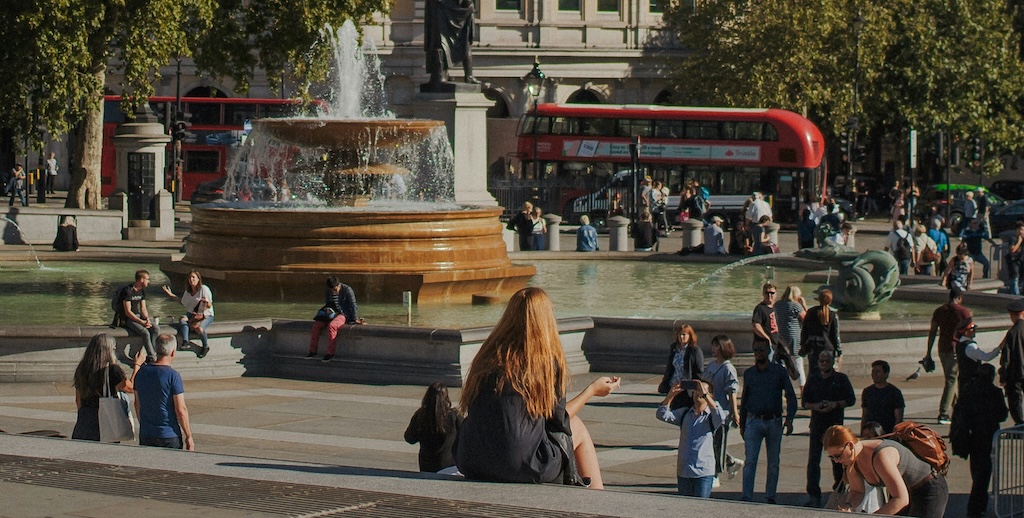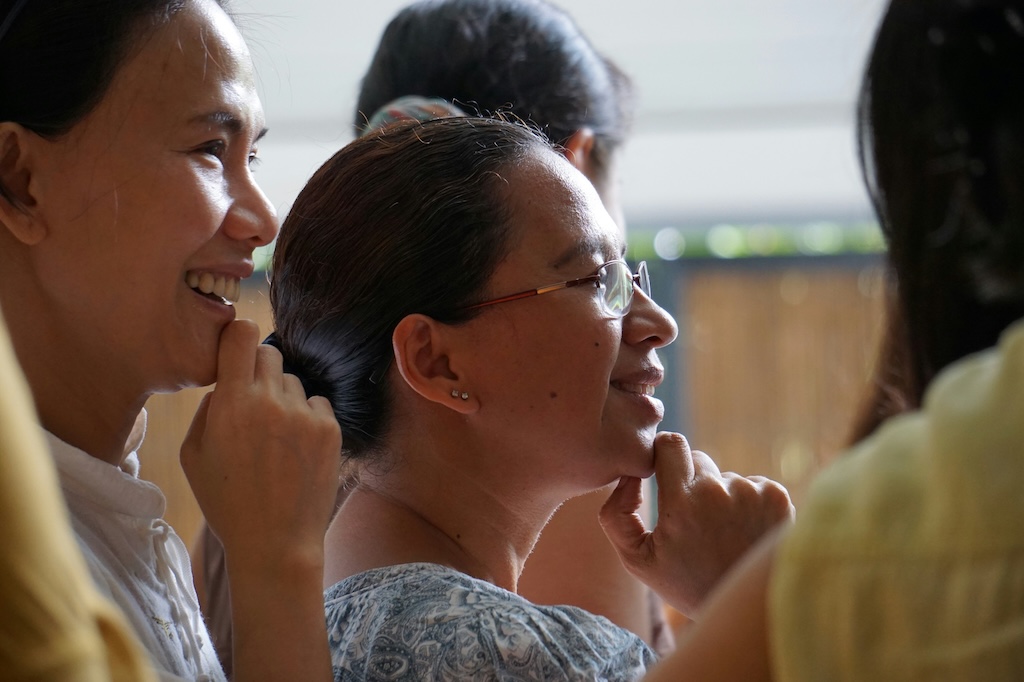Cities, high streets, parks, offices, shopping centres… the spaces where we live and work can be experienced in many different ways across the day. That same place can also be experienced very differently by different people, depending on factors such as gender, ethnicity, age, disability and class.
Take this recent BYU study, for example, which reveals a stark contrast between men’s and women’s experiences of walking home at night. Using heat maps, the researchers were able to see that while men tended to look directly at focal points of their destination, women focused more on potential safety hazards.
Amsterdam council member Elise Moeskops has described young women are the otters of public spaces. “Otters signal a thriving ecosystem, and women who feel safe make for a city that, well, actually functions properly.”
For decades, there has been growing recognition that inadequacies of urban design reflect long-held patriarchal social beliefs and practices of dominant middle-class culture. According to the UN: “In this process of fast urbanization, failure to fully mainstream gender equality into urban planning, legislation and economic development is hindering the inclusiveness of cities and preventing the full integration of women and girls in the economic, social, political and cultural life of cities.”
Fortunately, we are seeing more calls to make women and girls’ experiences of places better all over the world – from responsible architecture to gender-sensitive planning and design. In line with this, new tools, design standards and guidelines are being introduced to reimagine spatial arrangements in a way that has a transformative impact on women’s lives.
Naturally, digital technologies have a fundamental role to play in enabling more inclusive urbanisation. From better safety and mobility to improved health and wellbeing and decision-making, this article explores how some of these tools and frameworks are being used to challenge the status quo and create more equitable public spaces.

Photo: Hoyoung Choi
The gender data gap
To date, there has been a significant lack of comprehensive and accurate data about women and girls compared to men. While it is not necessarily deliberate, this ‘gender data gap’ is problematic and continues to hinder progress today.
As Caroline Criado-Perez explains in her book, Invisible Women: “One of the most important things to say about the gender data gap is that it is not generally malicious, or even deliberate. Quite the opposite. It is simply the product of a way of thinking that has been around for millennia and is, therefore, a kind of not thinking. A double not thinking, even: men go without saying, and women don’t get said at all. Because when we say human, on the whole, we mean man.”
The lack of data on women means that it is difficult to monitor progress and make truly informed decisions. It is also why we are seeing a rise in gender data collection initiatives, such as this gender-inclusive framework for cities from Change, Data Pop Alliance and Open Data Watch.
The report recognises gender data is critical to informing feminist urbanism and enhancing gender equity in urban spaces; this is due to its role in capturing differences in the status, conditions and experiences of different genders in various aspects of life. A culmination of factors have contributed to the current lack of detailed gender data in municipalities: limited technical expertise, collection mechanisms and resources, a focus on traditional metrics and political and cultural barriers.
Having piloted the initiative in five cities, including Barcelona, Nairobi and Mexico, the authors hope the resulting framework and data collection tool will be used as a blueprint for cities all over the world. Based on SWOT analysis, the framework has been designed to be both scalable and adaptable, “ensuring its relevance to any city globally.”
Other initiatives prioritising the collection of gender-informed data include UN-Habitat’s Urban Girls and Safetipin, which also demonstrate the importance of collaboration and co-design.
Following a series of innovation labs with citizens, stakeholders and local authorities, Urban Girls launched the Her City platform in 2021 to improve the safety of Botkyrka in Sweden. Data was collected through observations, interviews, explanatory walks and safety audits, which was used to redesign the area using Minecraft. Having been proposed to the Mayor of the city and the planning commission, the design is currently being planned for implementation.
Safetipin, meanwhile, collaborates with government and non-government stakeholders in using big data to make public spaces safer and more inclusive for women. With a mission to facilitate 100 cities to become gender-responsible by 2035, Safetipin collects data via digital tools and apps, which is transformed into visual maps to identify problem areas. It is both intended to empower women to make safer decisions, and to inform urban planning decisions.
In Delhi, the map has not only led to new street lighting; the data has been integrated into the Government’s Geospatial database and the Pune Indian Urban Data Exchange, which is designed to facilitate data sharing and collaboration between stakeholders in the city.

Photo: Beth MacDonald
Gender-sensitive placemaking
Vienna’s urban planning policies are widely recognised for their commitment to ensuring that the needs of all residents are considered in the design and development of the city. Since the early 1990s it has carried out more than 60 initiatives that have used ‘gender mainstreaming’, including street lighting projects, widening pavements for buggies and designing social housing for women. It has even improved the safety of alleyways with the addition of mirrors.
With women’s safety a growing global concern, there is much to be learned from Vienna’s gender mainstreaming approach – particularly, how thoughtful innovation can transform our perception of spaces. Safety concerns are giving rise to other initiatives, such as Strut Safe in the UK – a free community-driven phone line for women and marginalised groups to call when they are walking home alone – and Monash University’s XYX Lab in Australia, which uses feminist crowdsourcing to highlight safe and unsafe places, and more.
Critically, when considering place-based innovation Monash’s authors note: “Rather than a reactive afterthought, the ideas were future-focused and placed the safety of women at the forefront of the discussion.”
The same applies to safety on public transport, for which Monash has also developed a toolkit. This particular research notes the importance of considering the full breadth of civic diversity within planning, design and policymaking; without full acknowledgement of the intersectionality of gender with other forms of diversity and marginalisation, “inclusion will be limited”.
Data is again pinpointed as having an essential role to play here, for which digital technologies can support in terms of collection, analysis and monitoring. Co-design is also highlighted as a key enabler of inclusive urbanisation – something I have written about here.
AI and public spaces
Of course, artificial intelligence has a central role to play in data collection, planning and design. But this must be done with utmost care and scrutiny, otherwise it risks perpetuating existing gender biases and inequalities. Ultimately, gender-sensitive cities require gender-informed AI that has social validation and public control.
It is why companies such as UrbanistAI are interesting, using their new AI platform to bring citizens and policymakers together to reimagine the places where they live. By enabling participants to collaboratively design new concepts for public spaces and building designs, the tool makes it possible to visualise the real-world implications of policies.
Giz Data Lab, for example, used the platform to highlight the potential transformative impact of urban planning for feminist spaces. This included elements for safety in public spaces such as emergency buttons, cameras, female security personnel and lighting.
Furthermore, the project demonstrated the positive social and cultural impact of inclusive design. The use of feminist artwork and job ads for women were designed to boost self-confidence, send positive messages for cultural identity awareness and help revert economic imbalances through empowerment. While we don’t yet know about the energy implications of services like this, it is an encouraging example of AI being used for good, further reinforcing the importance of responsible innovation, leadership and governance.

Photo: Richard Stachmann
Other tools for participatory feminist urban development
Block By Block is probably one of the most well-known tools for urban co-design, enabling communities to reimagine the cities they live in using the video game Minecraft.
It is a collaboration between Minecraft creators Mojang and the UN-Habitat’s Global Space Programme and uses interactive workshops based on manipulating architectural models in Minecraft. While it has broad applicability for increasing public participation in planning, the UN says it has been especially significant for the inclusion of women and girls in policymaking and urban design.
This includes Plan International’s Safer Cities for Girls Programme, as well as the #UrbanGirlsMovement in Sweden, which aims to collect and map good practices to demonstrate how participatory feminist urban development can improve living conditions in society as a whole.
Barcelona’s Smart Feminist City is another example of great practice. By actively putting technology at the service of citizens – whereby they own the data rather than selling citizen data to corporations – it shows the benefits of a truly transparent and participatory approach. To enable this, Barcelona has implemented its own digital platform, Decidim Barcelona (‘We Decide’) to ensure change happens from the ground up and is in a position to challenge patriarchal models.
It is an approach that other towns and cities should explore, in relation to their own context.
Cities for all
This article highlights several ways that digital tools and technologies are being used to make places better for women and girls – ranging from data collection methods to gender-sensitive placemaking.
To be able to create truly equitable cities, policy-makers and decision-makers must ensure everyone has equal access to the tools that enable inclusive urban planning – and that the technologies used are built carefully and with diverse user input.
Evaluation tools will have a critical role to play in making the ‘business’ case for gender-sensitive urbanism in future. While some are emerging – such as this project using inclusive AI to measure the quality of inclusive public spaces – data is lacking and there is still much work to be done to quantify the benefits.
If we can get the tools, methods, governance and measurement right, we can start to add them to our approach to creating spaces and places that value all citizens equally; where women feel safe, seen and heard.
To finish with a quote from Caroline Criado-Perez’s Invisible Women: “And so, to return to Freud’s ‘riddle of femininity’, it turns out that the answer was staring us in the face all along. All ‘people’ needed to do was to ask women.”







